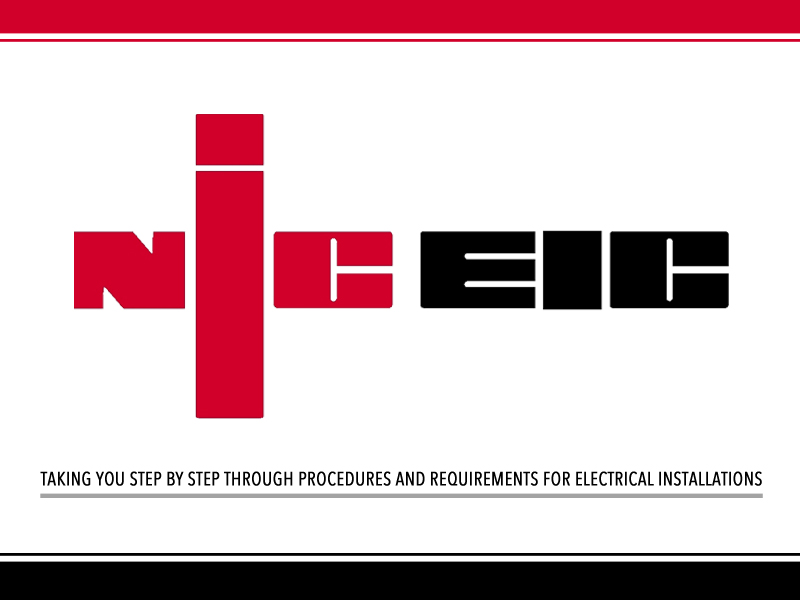
This article discusses the significance of the change introduced by the 18th Edition of BS 7671 to the verification required for the protective measure automatic disconnection of Supply (ADS).
ADS, is the most common protective measure used to provide protection against electric shock for low voltage installations. For the purposes of verifying ADS, the earth fault loop impedance (Zs) of each circuit that relies on ADS is normally determined by testing.
However, as discussed in this article, for some installations, particularly those of domestic premises where most, if not all, final circuits are provided with RCD protection, Zs does not need to be determined in order to verify ADS.
The purpose of ADS is to ensure that, in the event of a fault of negligible impedance between a line conductor and an exposed-conductive-part or protective conductor, the protective device will automatically disconnect the circuit within the appropriate disconnection times of Chapter 41 of BS 7671.
Table 41.1 gives the maximum disconnection times for final circuits having a current rating not exceeding:
● 63 A containing socket-outlets, and
● 32 A for those supplying only fixed connected current-using equipment (411.3.2.2).
Disconnection times relevant to single-phase AC circuits are shown in Table 1.
Earth fault loop impedance testing
Earth fault loop impedance (Zs) testing is the most common method used to verify ADS for overcurrent protective devices. The purpose of this ‘live’ test is to confirm that, under earth fault conditions, the magnitude of fault current (earth fault loop current) as illustrated in Fig 1 will be sufficient to disconnect the protective device within the appropriate disconnection time, see Table 1.
For these purposes, the measured value of Zs should not exceed the maximum value permitted by the manufacturer of the protective device, taking into account any adjustment for difference in temperature between design and test values.
Where required, verification of ADS may be confirmed by comparing the (corrected) measured impedance values against those given in the relevant tables contained in Chapter 41.
For example, from Table 41.3 the maximum permitted value of Zs for the 6 A type B (BS EN 60898) circuit-breaker shown in Fig 1 is 7.28 Ω.
Therefore, to verify that under earth fault conditions the device will disconnect the circuit within the required time (0.4 s given a TN system), the measured value of earth fault loop impedance shouldn’t exceed:
7.28 Ω x 0.8 = 5.82 Ω
Where impedance measurements are made at ambient temperature, the applied factor 0.8 takes account of an increase in resistance of conductors with the increase of temperature due to load current, Appendix 3 of BS 7671 refers.
Whilst the verification methods described should continue to be used appropriately where fault protection is provided by an overcurrent device, where an RCD is installed upstream of the protective device, Regulation 643.7.1 permits a different approach to be used to verify ADS.
Regulation 643.7.1
At first glance, the requirements detailed for verifying ADS for both TN and TT systems in Regulation 643.7.1 may appear to be no different than those previously detailed in Regulation 612.8.1 of the seventeenth edition of BS 7671. However, Regulation 643.7.1 includes the following statement which is applicable for both TN and TT systems: ‘Where the effectiveness of the protective measure has been confirmed at a point located downstream of an RCD, the protection of the installation downstream from this point may be proved by confirmation of the continuity of the protective conductors.’
Considering the requirements of BS 7671 for additional protection, especially those relating to cables concealed in walls, generally all final circuits installed in domestic premises will be protected by RCDs having a residual current rating not exceeding 30 mA.
Typically, this is achieved by a consumer unit having a dual RCD configuration and, increasingly, by the use of RCBOs protecting individual circuits. Therefore, where continuity of protective conductors is verified as required by Regulation 643.2.1, ADS for the final circuits connected downstream of an RCD can be confirmed by verifying the effectiveness of the RCD.
For a typical domestic installation as shown in Fig 2, a 30 mA RCD will provide additional protection for a number of final circuits. Where continuity has been confirmed as part of the dead testing completed for initial verification and the installation is energised, an external earth fault loop impedance test (Ze) should be carried out, normally at the consumer unit intake, to verify the protective measure upstream of that point, that is to confirm that the installation is connected to Earth and the loop impedance is appropriate for the Earthing arrangement (TN-S in the case of Fig 1).
 However, conducting earth fault loop impedance tests downstream of this point is unnecessary, because ADS for the final circuits shown in Fig 2 is achieved by verifying the effectiveness of the RCD.
However, conducting earth fault loop impedance tests downstream of this point is unnecessary, because ADS for the final circuits shown in Fig 2 is achieved by verifying the effectiveness of the RCD.
Whether an RCD is installed to provide fault or additional protection, it must be tested to verify its effectiveness, and where an RCD satisfies the disconnection requirements for additional protection, it will also satisfy the requirements for fault protection. An RCD installed to provide additional protection must disconnect within 40 ms (See note to 643.8), whereas an RCD installed to provide fault protection must disconnect within the relevant time stated in Chapter 41 of BS 7671 (see Table 1 of this article).
Where a circuit, such as a distribution circuit, is provided with fault protection by an overcurrent device only, the verification for ADS requires the earth fault loop impedance to be determined at the furthest point of the circuit.
However, where an RCD is connected upstream of an overcurrent device, as shown in Fig 2, the verification for ADS should be provided by testing the effectiveness of the RCD. As such, there is no reason to determine the earth fault loop impedance of the circuits, Zs.
The purpose of the RCD test is to verify that the RCD will disconnect within the required time. The test performed on each RCD should be conducted at the most convenient place closest downstream of the device, such as at a socket-outlet.
The measured reading for each RCD tested should be recorded in the appropriate column on the ‘Schedule of circuit details and test results’, which forms part of NICEIC and ELECSA certificates. For the column entitled ‘Maximum measured earth fault loop impedance’ not applicable ‘N/A’ should be recorded.
Summary
As discussed in this article, where an RCD is connected upstream of an overcurrent device, we can rely on the RCD, subject to the verification described, to provide ADS.
Where this is the case, performing earth fault loop impedance tests on the circuits connected to this RCD would be unnecessary and should be avoided, particularly considering the requirements of the Electricity at Work Regulations 1989 (EWR) regarding unnecessary live testing.
Get more details on NICEIC registration by clicking here










